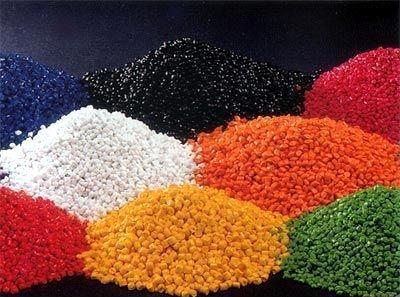What is the difference between modified plastics and non modified plastics?
The so-called "plastic modification" refers to the method of adding one or more other substances to plastic resin to modify its original function, improve one or more functions, and then expand its applicability. Modified plastics are collectively referred to as "modified plastics".
There are generally the following types of methods for plastic modification:
1. Enhancement: By incorporating fiber or sheet-like fillers such as glass fiber, carbon fiber, and mica powder, the intention is to increase the rigidity and strength of materials, such as glass fiber reinforced nylon used in electric tools.
2. Toughening: The intention of improving the toughness/impact strength of plastics is achieved by incorporating other substances such as rubber and thermoplastic elastomers, such as toughened polypropylene commonly used in automobiles, household appliances, and industrial applications.
3. Blending: A method of uniformly mixing two or more incompletely compatible polymer materials into a micro compatible and micro phase separated mixture to meet certain requirements for physical, mechanical, optical, and processing functions.
4. Alloy: Similar to blending, but with good compatibility between components, it can form a homogeneous system and achieve certain functions that cannot be achieved by a single component, such as PC/ABS alloy or PS modified PPO.

5. Filling: The intention of improving physical and mechanical functions or reducing costs by incorporating fillers into plastic.
6. Other modifications: such as using conductive fillers to reduce the electrical resistivity of plastics; Add antioxidants/light stabilizers to improve the weather resistance of the data; Participate in pigments/dyes to change the color of materials, participate in internal/external lubricants to improve the processing function of materials, use nucleating agents to modify the crystallization characteristics of semi crystalline plastics to improve their mechanical and optical functions, and so on.
In addition to the physical modification methods mentioned above, there are also methods to modify plastics using chemical reactions to achieve specific functions, such as grafting polyolefins with maleic anhydride, crosslinking polyethylene, and using peroxides in the textile industry to degrade resins to improve flowability/fiber forming performance.
In industry, multiple modification methods are often used together, such as adding toughening agents such as rubber in the process of plastic reinforcement modification to avoid excessive loss of impact strength; In the production of thermoplastic vulcanized rubber (TPV), there are physical mixing and chemical crosslinking, among others.
In fact, any plastic raw material contains at least a certain amount of stabilizer when leaving the factory to avoid degradation during storage, transportation, and processing. Therefore, there is no strictly defined "unmodified plastic". However, in industry, the base resin produced by chemical plants is usually referred to as "unmodified plastic" or "pure resin".
Article source: Taishan conductive mica particles
-
04-11
Taishan conductive PP masterbatch: How to use defoaming masterbatch?
Defoaming masterbatch is suitable for enterprises that use PE and PP recycled plastics for product production. The trace amount of moisture contained in raw materials has a very serious impact on the
-
11-13
Characteristics and uses of conductive masterbatch plastics
Characteristics and uses of conductive masterbatch plastics1、 Characteristics of conductive masterbatch plastics:① Most plastics are lightweight, chemically stable, and will not rust;② Good impact res
-
10-13
What is PP talc powder masterbatch
What is the masterbatch of PP talc powder?PP talc powder masterbatch is a plastic modified filler, mainly composed of talc powder, which is a particle mixed with polymers or other carriers. It is main
-
08-09
Taishan Conductive Cloud Masterbatch Manufacturer Tells You Why to Use Conductive and Anti static Engineering Plastics
1. The fundamental physical properties of static electricity are:(1) Attracting or excluding;(2) There is a potential difference with the earth;(3) Discharge current will occur.These three characteris

